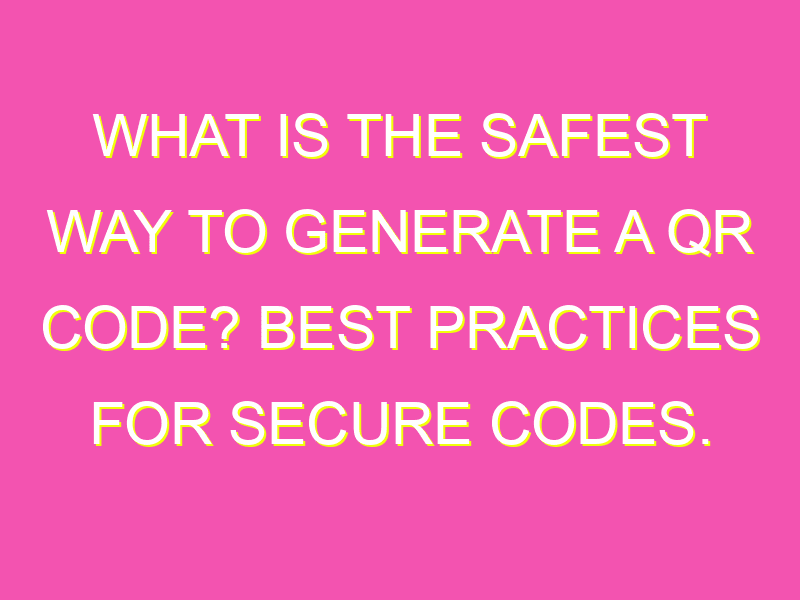Want to drive traffic to your website, social media pages, or business with a powerful and attractive marketing tool? Consider QR codes! But safety should never be compromised when generating them. Here’s how to create a safe and effective QR code using qr-code-generator.com:
Remember, your audience’s privacy is of utmost importance. Use reliable sources like qr-code-generator.com and follow these simple steps to create a QR code that is both safe and successful for all your business needs.
Introduction to QR Codes
QR codes have become a popular marketing tool in recent years. These codes can be used to quickly direct consumers to specific websites, promotions, or other important information. However, not all QR codes are created equal. Some QR codes may be unsafe and could potentially lead to phishing scams or other harmful activities. Therefore, it’s important to know how to generate a QR code in the safest way possible.
Choosing a QR Code Generator
There are many QR code generators available online, but not all of them are secure. It’s important to choose a well-known and reputable generator to ensure the safety of the QR code you generate. One good option is qr-code-generator.com, which provides an easy-to-use interface and a secure server. This generator also allows you to customize your QR code with various shapes, frames, and colors.
Importance of URL Verification
Before generating a QR code, it’s important to verify the URL that you will be linking to. This is crucial in preventing phishing scams or other dangerous activities. Ensure that the URL begins with “https” and has a valid SSL certificate, indicating that it’s a secure connection. Additionally, double-check the URL to make sure it’s spelled correctly, as some scammers may use similar URLs to trick consumers.
Customizing Your QR Code
Customizing your QR code can make it more visually appealing and increase engagement with consumers. Consider modifying the shape, frame, and color of your QR code to match your branding. Using a unique design can also help prevent scammers from replicating your QR code for their own malicious purposes. However, it’s important to ensure that your customizations do not interfere with the code’s functionality.
Saving Your QR Code
After creating your QR code, it’s crucial to save it to a secure location on your computer. You can save the code as a PNG or vector file, but PNG is the recommended format because it’s more widely compatible. Be sure to give the file a descriptive name that corresponds to your campaign or promotion.
Integrating QR Code into Print Materials
Once your QR code has been generated and saved, it’s time to integrate it into your print materials. Remember to include a call-to-action text that lets consumers know what they can expect by scanning the QR code. Some effective examples include “Scan to learn more” or “Scan to receive a discount.” Additionally, it’s important to ensure that the QR code is large enough to be scanned easily, but not so large that it takes up too much space on the printed material.
QR Code Best Practices
Here are some best practices to ensure the safety and effectiveness of your QR code:
- Test the QR code: Before releasing any print materials, be sure to test the QR code on various devices to ensure that it works properly.
- Don’t overload the QR code: Avoid embedding too much information in the QR code. This can make it difficult for scanners to read and may ultimately discourage consumers from scanning it.
- Track your QR code: Use a tracking tool to monitor how many people are scanning your code and where they’re coming from.
Conclusion: Ensuring QR Code Safety and Effectiveness
Generating a QR code can be a simple and effective way to reach consumers, but it’s important to do so in the safest way possible. By following these best practices, you can ensure that your QR code is both visually appealing and safe for consumers to scan. Remember to always verify your URL and test your QR code before integrating it into your marketing materials. With these precautions in mind, you can effectively use QR codes to promote your business or organization.





